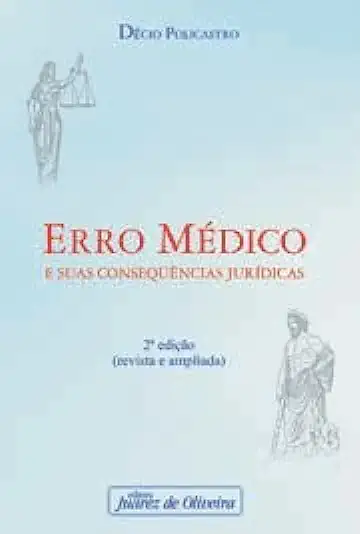
Medical Error and Its Legal Consequences - Décio Policastro
Medical Error and Its Legal Consequences: A Comprehensive Guide for Healthcare Professionals and Legal Practitioners
Introduction
Medical errors are a serious and growing problem in healthcare systems around the world. They can cause significant harm to patients, leading to physical and psychological injuries, disability, and even death. In addition to the human toll, medical errors can also have a significant financial impact on healthcare providers and the legal system.
Understanding Medical Errors
Medical errors can occur for a variety of reasons, including:
- Human error: This is the most common cause of medical errors and can be attributed to factors such as fatigue, stress, distractions, and lack of training.
- Systemic issues: These include problems with communication, coordination, and teamwork within healthcare organizations.
- Technology failures: These can include problems with medical devices, software, and information systems.
Legal Consequences of Medical Errors
Medical errors can have a number of legal consequences, including:
- Civil lawsuits: Patients who have been injured by medical errors may file civil lawsuits against the healthcare providers responsible for their injuries. These lawsuits can result in significant financial damages, including compensation for medical expenses, lost wages, pain and suffering, and emotional distress.
- Criminal charges: In some cases, medical errors may also lead to criminal charges, such as manslaughter or negligence. These charges can result in fines, imprisonment, and loss of medical license.
- Regulatory sanctions: Healthcare providers who commit medical errors may also be subject to regulatory sanctions, such as fines, probation, or suspension of their license.
Preventing Medical Errors
There are a number of things that healthcare providers can do to prevent medical errors, including:
- Improving communication and teamwork: Healthcare providers should work together to ensure that they are communicating effectively and working as a team. This can help to reduce the risk of errors caused by miscommunication or lack of coordination.
- Using technology effectively: Healthcare providers should use technology to their advantage to improve patient safety. This can include using electronic health records, computerized physician order entry systems, and other tools to reduce the risk of errors.
- Providing adequate training: Healthcare providers should receive adequate training to ensure that they are competent to perform their duties. This training should include information on medical errors and how to prevent them.
Conclusion
Medical errors are a serious problem, but they can be prevented. By taking steps to improve communication, teamwork, and technology use, healthcare providers can help to reduce the risk of medical errors and protect their patients from harm.
Order Your Copy Today!
Medical Error and Its Legal Consequences is a comprehensive guide to the legal consequences of medical errors. This book is essential reading for healthcare professionals, legal practitioners, and anyone else interested in patient safety. Order your copy today!